Django To ensure the correct display of the form, you need to add CSRF( It is a protection method to prevent cross site requests from being forged and opened by default ), stay <form></form> Add... Between
{% csrf_token %}
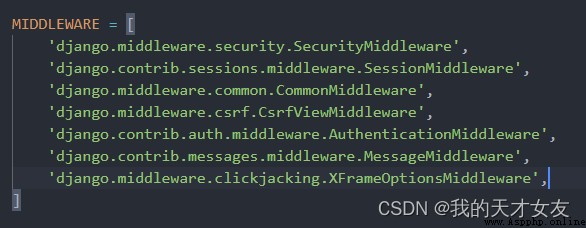
In the project settings.py in * ‘django.middleware.csrf.CsrfViewMiddleware’, * introduce , Without this middleware , Manually add .
First open path is GET request , If you click upload, it is POST request , If the file content is not empty , Then upload the file , The upload path is... Under the main project media/uploads/, If the path does not exist, create a new .open(os.path.join(path + myFile.name), ‘wb+’) Binary read / write opens the corresponding file ,chunks() Read and write files in blocks .
def upload_file(request):
if request.method == "GET":
return render(request, 'app1/upload.html')
if request.method == "POST":
myFile = request.FILES.get("myfile", None)
if myFile:
path = 'media/uploads/'
if not os.path.exists(path):
os.makedirs(path)
dest = open(os.path.join(path + myFile.name), 'wb+')
for chunk in myFile.chunks():
dest.write(chunk)
dest.close()
return HttpResponse(" Upload to complete ")
else:
return HttpResponse(" No files uploaded ")
Add route .

The file has been uploaded successfully .
Create a new one as follows form.py Write the following code
from django import forms
class UserInfoForm(forms.Form):
''' User state '''
STATUS = ((None, ' Please select '), (0, ' normal '), (1, ' Invalid '),)
username = forms.CharField(label=" User name ", min_length=6, widget=forms.widgets.TextInput(
attrs={
'class': 'form-control', 'placeholder': ' Please enter the user name '}
))
password = forms.CharField(label=" password ", min_length=6, max_length=10, widget=forms.widgets.PasswordInput(
attrs={
'class': 'password'}, render_value=True
))
age = forms.IntegerField(label=" Age ", initial=1)
mobile = forms.IntegerField(label=" Phone number ")
status = forms.ChoiceField(label=" User state ", choices=STATUS)
createdate = forms.DateTimeField(label=" Creation time ", required=False)
Configure the view and path to display the corresponding form
app1 Under the views.py
def userinfo_form(request):
if request.method == "GET":
myForm = UserInfoForm()
return render(request, 'app1/userinfo.html', {
'form_obj': myForm})
userinfo.html
<html>
<head></head>
<body>
<form action="" method="POST">
{% csrf_token %} {
{ form_obj.as_p }}
<input type="submit" value=" Submit " />
</form>
</body>
</html>
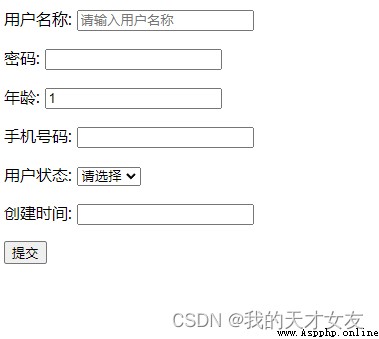
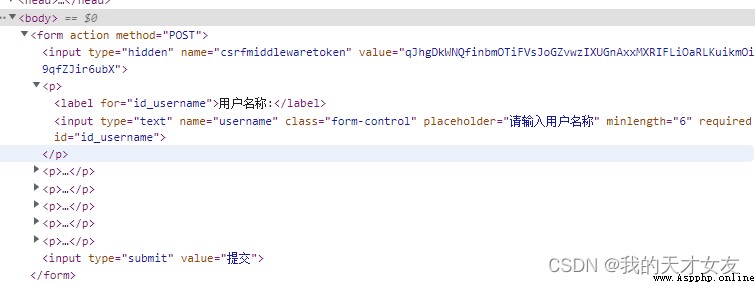
stay form Add the following code to
class UserInfoForm__Msg(forms.Form):
''' User state '''
STATUS = ((None, ' Please select '), (0, ' normal '), (1, ' Invalid '),)
username = forms.CharField(label=" User name ", min_length=6, widget=forms.widgets.TextInput(
attrs={
'class': 'form-control', 'placeholder': ' Please enter the user name '}
), error_messages={
'required': ' User name cannot be empty ', 'min_length': ' Length not less than 6 position ', 'invalid': ' Can't contain special characters '
})
password = forms.CharField(label=" password ", min_length=6, max_length=10, widget=forms.widgets.PasswordInput(
attrs={
'class': 'password'}, render_value=True
), error_messages={
'required': ' The password cannot be empty ', 'min_length': ' The password cannot be less than 6 position ', 'max_length': ' The password cannot be redundant 10 position ',
})
age = forms.IntegerField(label=" Age ", initial=1, validators=[age_validate], error_messages={
'required': ' Age cannot be empty ',
})
mobile = forms.IntegerField(label=" Phone number ", validators=[mobile_validate], error_messages={
'required': ' Mobile number cannot be empty ',
})
status = forms.ChoiceField(label=" User state ", choices=STATUS, error_messages={
'required': ' User status cannot be empty ',
})
createdate = forms.DateTimeField(label=" Creation time ", required=False)
Add view
def userinfo_form_msg(request):
if request.method == "GET":
myForm = UserInfoForm__Msg()
return render(request, 'app1/userinfoform.html', {
'form_obj': myForm})
else:
f = UserInfoForm__Msg(request.POST)
if f.is_valid():
print(f.cleaned_data['username'])
else:
errors = f.errors
print(errors)
return render(request, 'app1/userinfoform.html', {
'form_obj': f, 'errors': errors})
return render(request, 'app1/userinfoform.html', {
'form_obj': f})
Template file
<form action="" method="POST" novalidate>
{% csrf_token %}
<p>
{
{ form_obj.username.label }}:{
{ form_obj.username }} {
{ errors.username.0 }}
</p>
<p>{
{ form_obj.password}}{
{ errors.password.0 }}</p>
<p>{
{ form_obj.status.label }}:{
{ form_obj.status }} {
{ errors.status.0 }}</p>
<p>{
{ form_obj.age.label }}:{
{ form_obj.age }} {
{ errors.age.0 }}</p>
<p>{
{ form_obj.mobile.label }}:{
{ form_obj.mobile }} {
{ errors.mobile.0 }}</p>
Error message summary : {
{ errors }}
<input type="submit" value=" Submit " />
</form>
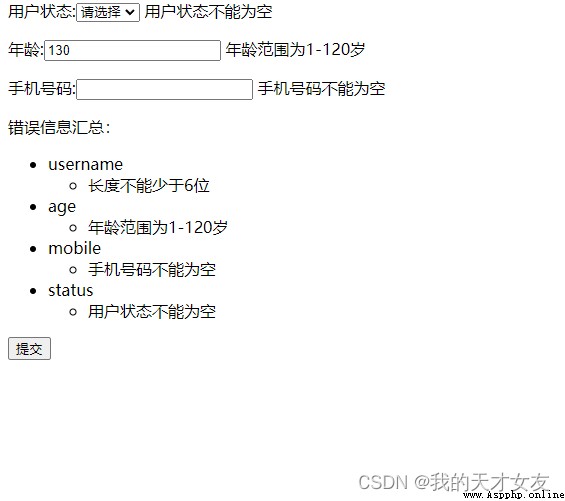
The self format verification of the form is also added here , Get data for the form
Template file :upload_form.html
<form enctype="multipart/form-data" action="" method="post">
{% csrf_token %} {
{ form_obj.as_p }}
<br />
<input type="submit" value=" Upload files " />
<img src="media/uploads/{
{ user.heading }}"
</form>
Model file
stay models.py Add model to , If there is no primary key, it will be generated by default id Primary key of
class ImgFile(models.Model):
name = models.CharField(verbose_name=' User name ', max_length=300, default="")
heading = models.FileField(verbose_name=' file name ', upload_to='media/uploads/')
def __str__(self):
return self.name
class Meta:
verbose_name = ' User avatar information '
db_table = 'user_img'
Form model form.py
class ImgFileForm(forms.Form):
name = forms.CharField()
heading = forms.FileField()
Model view
If you upload a file , Save the file in the corresponding directory , And return the information of the file .
def ingfileform(request):
if request.method == "GET":
f = ImgFileForm()
return render(request, 'app1/upload_form.html', {
'form_obj': f})
else:
f = ImgFileForm(request.POST, request.FILES)
if f.is_valid():
name = f.cleaned_data['name']
heading = f.cleaned_data['heading']
path = 'media/uploads/'
if not os.path.exists(path):
os.makedirs(path)
dest = open(os.path.join(path + heading.name), 'wb+')
for chunk in heading.chunks():
dest.write(chunk)
dest.close()
userimg = ImgFile()
userimg.name = name
userimg.heading = heading
userimg.save()
print(' Upload successful ')
return render(request, 'app1/upload_form.html', {
'form_obj': f, 'user': userimg})
else:
print(f.errors)
route
re_path It is configured that the corresponding files can be accessed directly in the browser ,
from django.urls import path, include, re_path
from django.views.static import serve
from mywed import settings
path('app1/userimg/', views.ingfileform),
re_path('media/uploads/(?P<path>.*)', serve,
{
"document_root": settings.MEDIA_ROOT}),
settings.py
The path here is set in the project file to facilitate unification , In practical applications, it should also be set in public files
MEDIA_URL = "media/uploads/"
MEDIA_ROOT = os.path.join(MEDIA_URL, "")
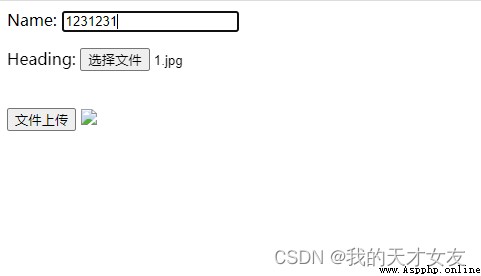

db The corresponding information is also logged in 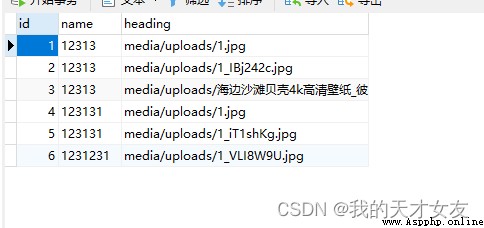
Django Provides ModelForm It can be directly associated with the model , omitted Form Actions defined in the form .
Template file , In order to be able to access , You must add csrfmiddlewaretoken Or comment in the view function @csrf_exempt, The first method is recommended
user name :<input type="text" id="username"></input>
password :<input type="password" id="password"></input>
{% csrf_token %}
<button id="submit"> Submit </button>
<script src="https://cdn.staticfile.org/jquery/1.10.2/jquery.min.js"></script>
<script> $("#submit").click(function(){
var csrf = $('input[name="csrfmiddlewaretoken"]').val(); $.ajax({
url: '/app1/ajax_login_data', type: "post", data: {
'username': $("#username").val(), 'password': $("#password").val(), 'csrfmiddlewaretoken': csrf }, success: function(data){
console.log(data) }, error: function(jqXHR, textStatus, err){
console.log(arguments); } }); }); </script>
view file
from django.views.decorators.csrf import csrf_exempt
def ajax_login(request):
return render(request, 'app1/ajax.html')
# @csrf_exempt
def ajax_login_data(request):
if request.method == "GET":
HttpResponse(" Internal own url")
username = request.POST.get('username')
password = request.POST.get('password')
print(username)
if username == 'admin' and password == '123456':
return JsonResponse({
'code': 1,
'msg': " Landing successful "
})
else:
print("222")
return JsonResponse({
'code': 0,
'msg': " Login failed "
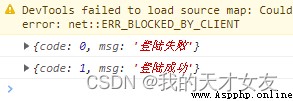
What is used here is online jquery Address , Also available at settings.py Match as follows , Create... In the root directory of the web site static Catalog , Put in jquery file .
<script src=“/statics/jquery.min.js”></script>
STATIC_URL = '/statics/'
STATICFILES_DIRS = [
os.path.join(BASE_DIR, "statics"),
]